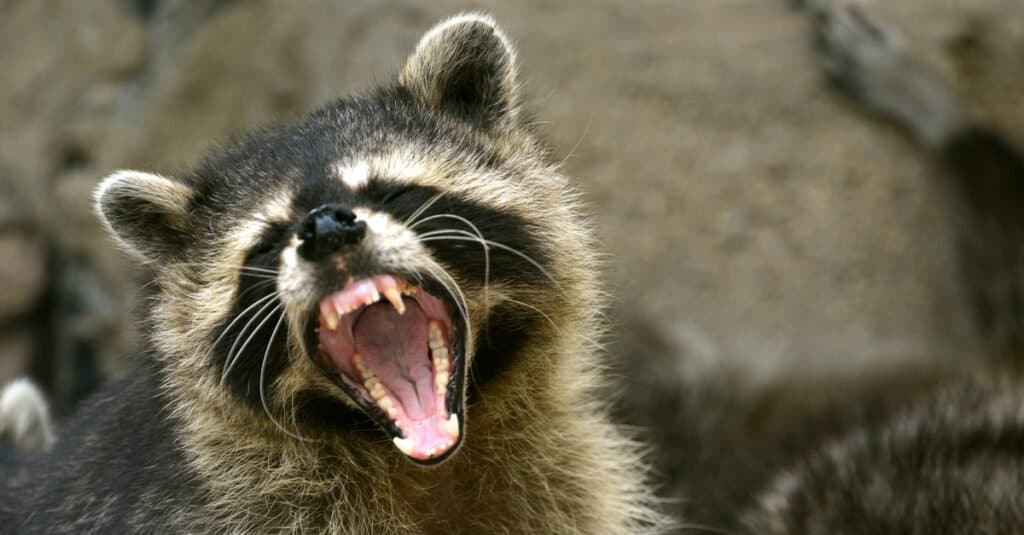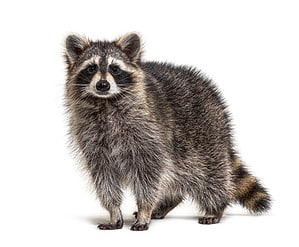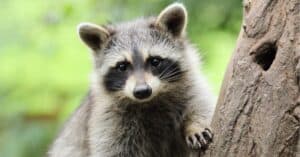Continue reading for our analysis...

Have you ever met someone that was so hungry that they were just downright cranky? And the only thing that soothed their attitude was by getting them something to eat. Well, we see this in the video, where this hungry raccoon couldn’t wait for food any longer. And so he went straight for the first thing to cross his path.
Raccoon Sighting in South Florida
The next YouTube video takes us to South Florida. The state where it seems we find the oddest videos of wild animal sightings! This one is of a raccoon and an iguana sighted together. This clip was uploaded by the YouTube page PPV-TAHOE. This channel started to report about cars, news, media, car accidents, and crime. His dedication is to capture real life on camera for all to see.
One Hungry Mammal

Raccoons can run up to 15 miles per hour.
©dangdumrong/Shutterstock.com
The video starts out by taking us to some type of parking lot in Southern Florida. A car has stopped on the opposite side of the parking lot, and this passerby on the other side is filming this. They undoubtedly stopped because they saw an iguana! This is no small iguana either; this one is a big one for sure.
Suddenly, we see a raccoon emerge out of the woods and slowly approach this iguana. For some reason, this raccoon is super hungry on this day. He wastes no time at all. He marches right up to this reptile and immediately attacks. However, what he didn’t expect was for him to fight for his life.
How Big Do Iguanas Get?

These reptiles can run up to 21 miles per hour.
©Laura Jonker/Shutterstock.com
Iguanas (Iguana iguana Linnaeus) are reptiles that are central to North America, South America, and Central America. These animals can reach anywhere from 8 pounds typically. However, the largest iguana ever recorded was actually 17 pounds and was over five feet long! Oddly enough, this iguana was found in Florida, too!
What Do Raccoons Eat?
Raccoons are omnivorous mammals. This means that they eat both animal and plant food. Raccoons like to eat food such as fish, nuts, berries, and corn. For animals, they like to prey on insects, turtles, mice, rabbits, muskrats, and bird eggs.
Raccoons can weigh up to 19+ pounds, so it is believable that he could have eaten this iguana. However, as we see from the video, it would have been no easy task.
Is This Normal Raccoon Behavior?

A raccoon will eat just about anything it can get its hands on, including an iguana.
©iStock.com/Edwin_Butter
While it may not seem like an iguana would be a typical meal for a raccoon, these masked mammals have been known to hunt and kill iguanas, most notably in southern Florida. Raccoons are omnivorous predators and will eat both plants and other animals. They are also often referred to as trash pandas for their habits of eating everything they can get their little paws on.
While iguanas are not a typical food source for raccoons, and they aren’t something that makes up a large part of their diet, it is quite normal for a raccoon to snack on them from time to time. The first known incident happened in 2006 when it was documented in a research paper how a young green iguana in Hugh Taylor Birch State Park became a raccoon snack.
Thank you for reading! Have some feedback for us? Contact the AZ Animals editorial team.







